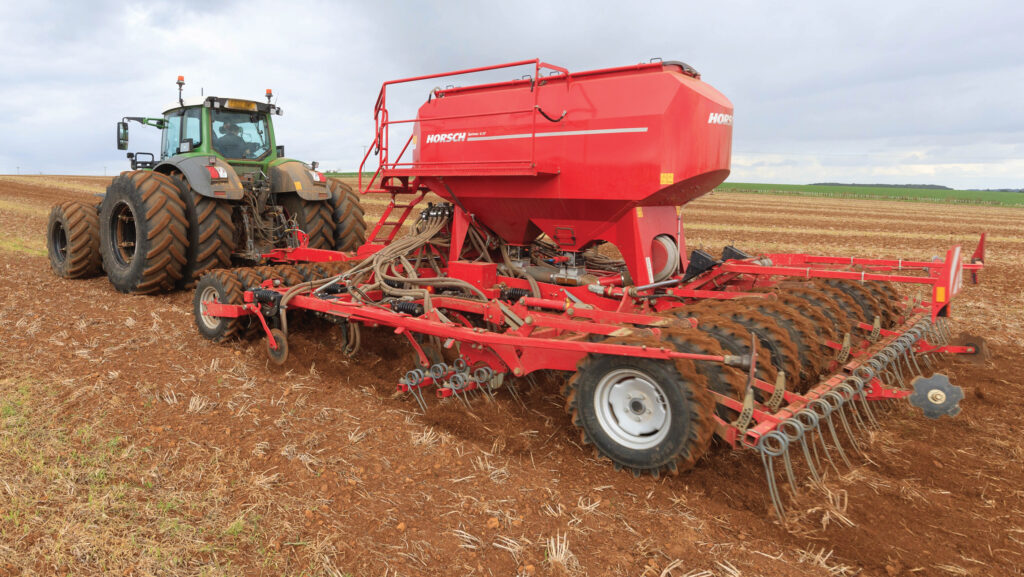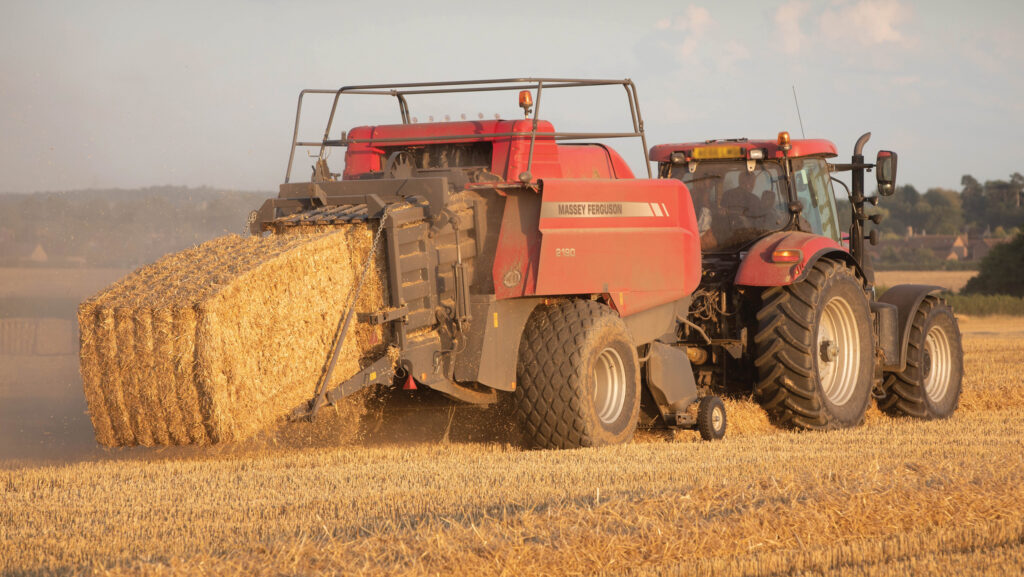How to introduce the SFI no-till action into cropping
 © Tim Scrivener
© Tim Scrivener The expanded Sustainable Farming Incentive (SFI) offer for 2024 includes a no-till action which pays £73/ha for each of the three years of an agreement.
Known as SOH1, the static action stipulates that direct drills must be used – which can be either tine, disc or precision seed drills – and that any following harrow tines must be rearward facing.
As such, no conventional or shallow min-till cultivation machinery can be used on land where this action applies, except for stubble rakes and straw harrows, providing they also have rearward facing tines.
See also: SFI 2024 changes: What they mean for arable farmers
To increase the chance of success and help with climate challenges, low-disturbance subsoiling to reduce compaction and mole draining to help natural drainage are permitted.
Farmers Weekly asked two independent agronomists for advice on how to implement no-till, whether the action will support changing practices, and what pitfalls to avoid:
Summary
Both of the independent agronomists in our article say that no-till can cut costs, but stress that the £73/ha SFI payment rewards established no-till systems and may not be flexible enough in its current form for those needing some tillage to avoid yield penalties.
They also stress that it’s a system, not a practice, that requires careful planning and a good understanding of soil.
1. Joe Cluley, Indigro
Making no-till work
Success with no-till is influenced by the porosity of the soil, as without it crop growth is restricted, says independent agronomist Joe Cluley of Indigro, who is based in the north Cotswolds.
Porosity can be increased in three main ways, he reveals, either by using tillage, using roots and biology, or a combination of both. Whichever method, the aim is that air can move in and out and water can infiltrate effectively.
Look for worm channels and a crumbly soil texture, similar to that of chocolate cake, he suggests, to indicate a soil which is ready for no-till.
“Where the system is working well, soil porosity is being delivered through biological action – which comes from having living roots in the soil, a diversity of plant species and adding organic amendments to the soil.
“It means that the rotation must be designed in such a way to facilitate this. For most, that means wider rotations which include cover and companion crops, as well as bicropping techniques.”
Common mistakes
Rushing into no-till, without altering the rotation, is the most common mistake that Joe encounters.
“You need to maximise soil cover, to reduce the impact of rainfall on the soil surface and get different plant root architectures exploring the soil. Where this happens, soil microbes are encouraged, aggregation takes place and soil function improves.”
He suggests reducing tillage intensity while adding organic soil amendments and increasing diversity, as an interim step. “If the soil is compacted, you may need to think about mechanical improvement first.”
The other potential issue is straw chopping, reports Joe. “As the straw breaks down, it draws nitrogen out of the soil, which may have an impact on the establishment of the following crop.
“It can also harbour slugs and affect the seed depth of following crops, reducing the plant count.”
The solution is to cut stubbles higher and ensure that straw is spread evenly, or to bale the straw.
When to forget no-till
A heavily compacted, well-trafficked soil will take longer to get into shape and isn’t suited to an immediate no-till approach, confirms Joe.
“The heavy rainfall we’ve encountered in the 2023/24 growing season has been a wake-up call,” he believes. “Where soil porosity wasn’t working well, the water couldn’t infiltrate the soil.
“Seed sat in waterlogged soil and rotted in some circumstances. In the worst cases, pre-emergence herbicides were also washed into the seeding zone, affecting germination and plant development.
“So unless you are confident that your soil structure is right, think about using subsoiling or make use of a summer cover crop – which also attracts SFI funding – to improve it.”
Four steps to no-till
- Assess soil condition – understand current soil structure and porosity. Air must move in and out, while water must infiltrate effectively
- Start by reducing tillage – gradually reduce tillage intensity while introducing cover crops and organic soil amendments
- Implement diverse rotations – begin to integrate cover crops, companion crops and a diversity of crop types
- Monitor and adjust – check soil health regularly and be prepared to make changes, especially in the early stages of transition.

© Tim Scrivener
2. Paul Cawood, Soil First Farming
Good incentive
For independent agronomist Paul Cawood of Soil First Farming in Shropshire/Cheshire, the no-till action is a very useful incentive for farmers who are intent on reducing soil degradation, improving water quality and working with nature.
“The £73/ha is great for those that are already doing it,” he says. “For others, it’s going to be tempting, so it has potential to bring about change.”
Paul makes the point that direct drilling is not a technique, but a system which needs planning for.
“No-till will only work if everything else is in place,” he explains. “Given the uniqueness of farms, it’s almost easier to tell people what not to do than it is to give advice on how to make it work.”
Direct-drilling into a soil that isn’t ready won’t work, he stresses. “A poorly structured soil with little organic matter won’t allow the water infiltration that’s required – it will just slump or cap. In the same way, compaction has to be dealt with too.”
He explains that cultivation puts texture and air into soils in an artificial way. “Without it, the soil needs to do that for itself. So a two-to-three-year run-in to direct drilling is often required, perhaps with strip-tilling being used in the meantime.”
Where to begin
The starting point for considering how to change should be a spade, he advises, followed by getting out there and digging some holes. “You need to understand where your soil is at.”
The next stage is coming up with a rotational system. An essential element of that is spring cropping with cover crops, so that carbon is built up in the soil and its resilience improves.
“Carbon gives soil a more stable structure,” continues Paul. “Leaving roots in the soil, through the use of cover cropping and a more diverse rotation, helps to build soil and get it functioning better.
“That makes it less prone to erosion and helps with nutrient cycling.”
Drill choice
Choice of drill matters, as it must suit the soil types that it will be used on.
As direct drilling requires more patience and waiting until soil conditions are right, potential converts to the system will have to get their heads around not going drilling when they might otherwise have done, cautions Paul.
“Get a drill demo organised,” he recommends. “You need to choose the one that suits your soil conditions rather than the one that comes with the best finance deal.”
He acknowledges that there’s no such thing as a cheap no-till drill but points out that they are low maintenance. “There are other costs savings too – you will use around 6.5 litres/ha of fuel with direct drilling.”
Yield penalty
The yield dip that has been linked to no-till is a reality for many when they first start direct drilling, he accepts. “You may produce less but you will also spend less doing it. So profitability improves.
“Direct drilling is about replacing lost soil carbon, restoring and building fertility. It is an investment in the future of the farm business,” he says.
Paul’s final point is that the no-till action in the SFI goes well with other actions, such as those that reward the use of cover crops, companion cropping, no insecticide and integrated pest management plans.
“With a well-thought-out system, you can stack them and really accrue financial and environmental benefits.”

